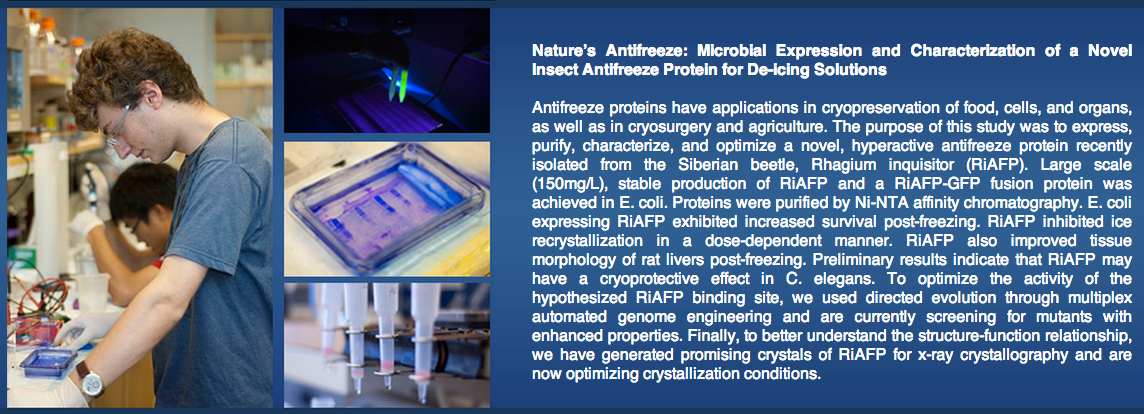Tracks/Food Energy
From 2014.igem.org
iGEM 2014 Food and Energy Track
Environment has been a track in iGEM for many years of the competition. Projects that tackle environmental issues have been popular since the first biosensor projects started to appear in the 2006 iGEM competition. Teams have been inspired to work on solutions to problems in their local area, such as the UBC in 2011 and Colombia in 2012. These teams were inspired to tackle massive environmental problems that are unique to their regions. Learning about these problems and how passionate teams can be to find solutions is one of the great parts of the iGEM competition.
You will find images and abstracts of the winning environmental teams from 2011 to 2013 in the page below. Also, follow the links below to see projects from all the Environment track teams.
Winning Food and Energy projects in 2013
Winning Food and Energy project 2011: (Tie) Washington and Yale
Washington
Project abstract: Synthetic biology holds great promise regarding the production of important compounds, and the degradation of harmful ones. This summer, we harnessed the power of synthetic biology to meet the world's needs for fuel and medicine. Make It: We constructed a strain of Escherichia coli that produces a variety of alkanes, the main constituents of diesel fuel, by introducing a pair of genes recently shown convert fatty acid synthesis intermediates into alkanes. Break It: We identified a protease with gluten-degradation potential, and then reengineered it to have greatly increased gluten-degrading activity, allowing for the breakdown of gluten in the digestive track when taken in pill form. Finally, to enable next-generation cloning of standard biological parts, BioBrick vectors optimized for Gibson assembly were constructed and used to construct the Magnetosome Toolkit: genes for biofabrication of magnetic particles.
Yale
Project abstract: Antifreeze proteins have applications in cryopreservation of food, cells, and organs, as well as in cryosurgery and agriculture. The purpose of this study was to express, purify, and characterize a novel, hyperactive antifreeze protein recently isolated from the Siberian beetle, Rhagium inquisitor (RiAFP). Large scale (150mg/L), stable production of RiAFP and a RiAFP-GFP fusion protein was achieved in E. coli. Proteins were purified using Ni-NTA affinity chromatography. E. coli expressing RiAFP exhibited increased survival post-freezing. RiAFP inhibited ice recrystallization in both splat and capillary assay. To optimize the activity of the hypothesized RiAFP ice binding site, we are using directed evolution through multiplex automated genome engineering (MAGE). Finally, we are further optimizinge our crystallization conditions for RiAFP to better understand the structure-function relationship, as well as conducting post-freezing survival assays in C. elegans.
 "
"